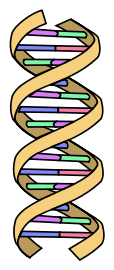
A computer programmer looks at DNA … and finds it to be “amazing” code.
From 2006 through 2017, Dutch entrepreneur and software developer Bert Hubert contributed from time to time to a web page where he listed many of the ways the workings of DNA can be likened to coding decisions by programmers. Some of his thoughts:
The human genome is about 3 gigabases long, which boils down to 750 megabytes. Depressingly enough, this is only 2.8 Mozilla browsers.
DNA is not like C source but more like byte-compiled code for a virtual machine called ‘the nucleus’. It is very doubtful that there is a source to this byte compilation – what you see is all you get.
 It is easier to imagine a potential source with no code than it is to imagine a code with no source but we are offered no further explanation. However, the pace picks up when we get to epigenetics, the changes we acquire during our lifetimes that are passed on through several generations without altering our DNA:
It is easier to imagine a potential source with no code than it is to imagine a code with no source but we are offered no further explanation. However, the pace picks up when we get to epigenetics, the changes we acquire during our lifetimes that are passed on through several generations without altering our DNA:
Although the actual relevant changes in the DNA of an organism rarely occur within a generation, substantial tinkering goes on by activating or deactivating parts of our genome, without altering the actual code.
This can be compared to the Linux kernel, which at boot time discovers what CPU it is running on, and actually disables parts of its binary code in case (for example) it is running on a single CPU system.
He also sees a computer analogy to “junk DNA” (non-coding DNA which was, at one time, thought to be accumulated garbage from the meanderings of evolution): … More.
Follow UD News at Twitter!
See also: H. Allen Orr on DNA as information